strike proof
my presentation promotes trout safety
I was fishing a small Morris County WTS last week and the stoneflies were everywhere, crawling on rocks and buzzing the surface. Trout were definitely on them. My previously successful stonefly patterns weren't working out. I sat back and watched the stones for while, falling or flying down to the surface and buzzing along, riding very high and showing a lot of wing area. I looked in my limited dry fly box for something dark-bodied, high-riding, with a decent sized wing profile. I ended up with a traditional Adams -- 16, maybe? I kept it as dry as possible, skated it a little when passive drifts in likely seams didn't draw attention. The fish mauled it.
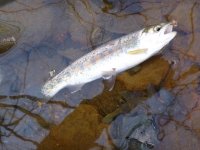
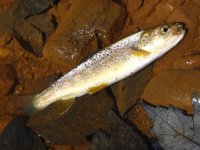
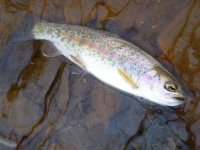
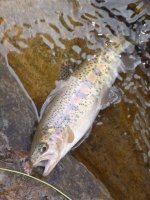
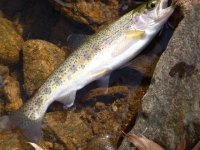
I have read a couple of stories about the origin of the Adams. It is rumored to have been invented as a mayfly, originally fished by someone who may or may not have designed it, but certainly didn't tie it. It can be tied in a variety of styles, maybe is defined better as a color scheme now, rather than a pattern. It can be trimmed or singed to ride in the film as an emerger. Last week I used it in a haze of stoneflies. Yesterday evening, I was on a stream with caddis and stones, and caught a few wild brown trout on an Adams as well. Is it just an attractor, some universal trout food? Searching pattern? It seems to have very broad appeal.
Is it a first choice fly? Can't match the hatch bail-out? Last-ditch, try it before I pack up choice? Most of us probably have them in our packs. How to you use it?





I have read a couple of stories about the origin of the Adams. It is rumored to have been invented as a mayfly, originally fished by someone who may or may not have designed it, but certainly didn't tie it. It can be tied in a variety of styles, maybe is defined better as a color scheme now, rather than a pattern. It can be trimmed or singed to ride in the film as an emerger. Last week I used it in a haze of stoneflies. Yesterday evening, I was on a stream with caddis and stones, and caught a few wild brown trout on an Adams as well. Is it just an attractor, some universal trout food? Searching pattern? It seems to have very broad appeal.
Is it a first choice fly? Can't match the hatch bail-out? Last-ditch, try it before I pack up choice? Most of us probably have them in our packs. How to you use it?


